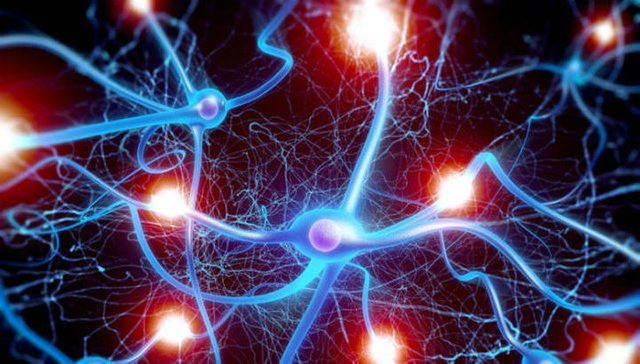The neuron is the structural and functional unit of the nervous system. So the neuron is called in Wikipedia. In general, all elementary cells are similar in structure. Shell, cytoplasm, nucleus with nucleolus. Like an amoeba without some details. By the way, ... The neuron shell consists of lipids (essentially fat). Through the shell, the neuron receives power. It misses fat-soluble substances such as oxygen and glucose. Naturally, the envelope of the neuron is constantly updated, like everything in the body. So think, lovers of low-calorie diets, eliminating the use of fat. You greatly risk that your lean brain will remain without sugar. Neurons are different: bezaksonnye, unipolar, pseudo-unipolar, bipolar, and multipolar neurons. They differ in their structure and function, except for the non-alcohol. He sits in his spinal cord, sad and does nothing, and maybe he does, but nobody cares. Maybe that's why he's sad :) He does not interest us either, but we are interested in the multipolar neuron. It is he who is the structural unit of the cerebral cortex. Our neuron is different from the others ... Many of course than it is different, but what we need is its processes. And so our neuron has one axon and a lot of branched dendrites. In our context, dendrites are a dozen on our target. We need to build and develop them. It is the dendrites that form our neural network, communicating with other neurons. With the growth of the dendrite (and in general, as well as the axon), a small thickening appears on its terminal part. The so-called growth cone. It is not static and is in constant motion. It's like if a column is erected by a lot of workers, they are constantly laying out new bricks, and they are bustling about there. And the building material to the growth cone is transferred in membrane vesicles through microtubules of the neuron cytoskeleton, which in turn consists of the protein "tubulin". This growth is progressing at a rate of about one millimeter per day. Sadly, I would like to faster. But this is how the world works, everything takes time. And by the way, one millimeter in the scale of a neuron is not so slow. And what does the dendrite do? Why is it needed? The dendrite receives signals from the axon of the neighboring neuron through the synaptic cleft :) Okay ... We'll get to that. In the meantime, let's talk about the axon. This is another outgrowth of a neuron and, unlike a dendrite, it is one. Just like the dendrite, it has a pipe structure. At its base, the body of the neuron has an axon hillock, which is also the trigger zone of the neuron (zone of greatest excitability). The top is covered with myelin sheath (the dendrite does not have it). By its end, the axon branches onto the nerve effector endings (terminals). It is with these terminals that the axon joins the dendrites of neighboring neurons. But it happens that it connects with the bodies of neighboring neurons, as well as with other axons, forming axo-somatic and axo-axonal synapses. The latter participate in the processes of inhibition. And so, the meaning of axon life is the transfer of nerve impulses from the body of the neuron to the dendrites of neighboring neurons. Also, the axon transports neuromedeators (dopamine, adrenaline, serotonin, etc.) with the help of which it affects the dendrites of neighboring neurons. And a whole mountain of biomolecules, about which to write in this article does not make sense. Next is the synapse. In fact, neurons do not touch each other but contact through the synapse. Synapse or synoptic cleft is the junction of dendrites and axon. Between them, they interact with neurotransmitters (hormones) that are secreted (released) into the synaptic cleft from the axon axes. Overcoming the synapse, the neurotransmitters enter the receptor zone of the dendrites of neighboring neurons. The receptor zone of dendrites is selective. Those. For each neurotransmitter its receptor is intended. How is the thought born? I hope everyone remembers from the school course of "physics" that an electric current is a directed movement of charged particles. So in a neuron such charged particles are ions of potassium, sodium, chlorine, etc. I forgot to say that over the lipid envelope of the neuron is located a layer of proteins that forms potassium, and sodium channels that lead into the neuron. At rest, these channels are closed. Positively charged ions are located outside the neuron, and negatively charged ions are located inside the neuron. Thus, on the envelope of the neuron, there is a voltage difference. This state is called the resting potential.
Further, the neurotransmitters trapped in the neuron through the dendrite receptors cause chemical and alterations in it, which in turn leads to the discovery of ion channels and, positively charged ions from the surface of the envelope enter the neuron. This process in the neuron is called depolarization and is accompanied by a change in voltage and as a consequence of a> discharge. This discharge is called the action potential or nerve impulse. That's it, just is a "piece of thought." Then the potassium-sodium balance in the cell is restored with the help of potassium-sodium pumps (one of the specialized proteins of the neuron), and our nervous impulse flew farther through the axon, to other neurons changing and multiplying. That's it, dear readers. I hope it was interesting. Well, or at least understandable. Normal mental activity is provided not only by excitation processes, but also by inhibition processes. 
I believe we are walking antennas 98% water with conductive salts receiving wavelength transmissions from the universe. Just my .02
Downvoting a post can decrease pending rewards and make it less visible. Common reasons:
Submit